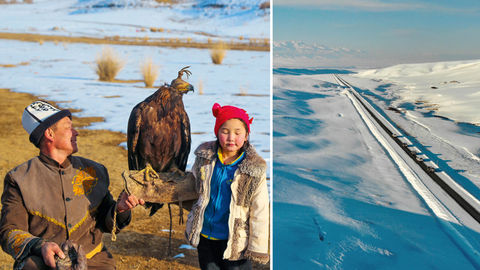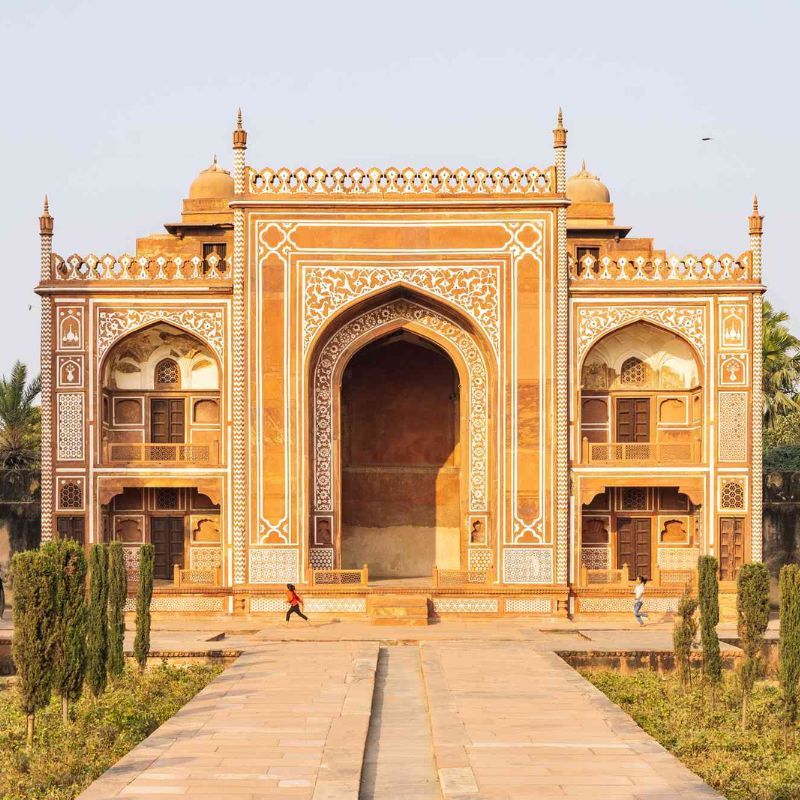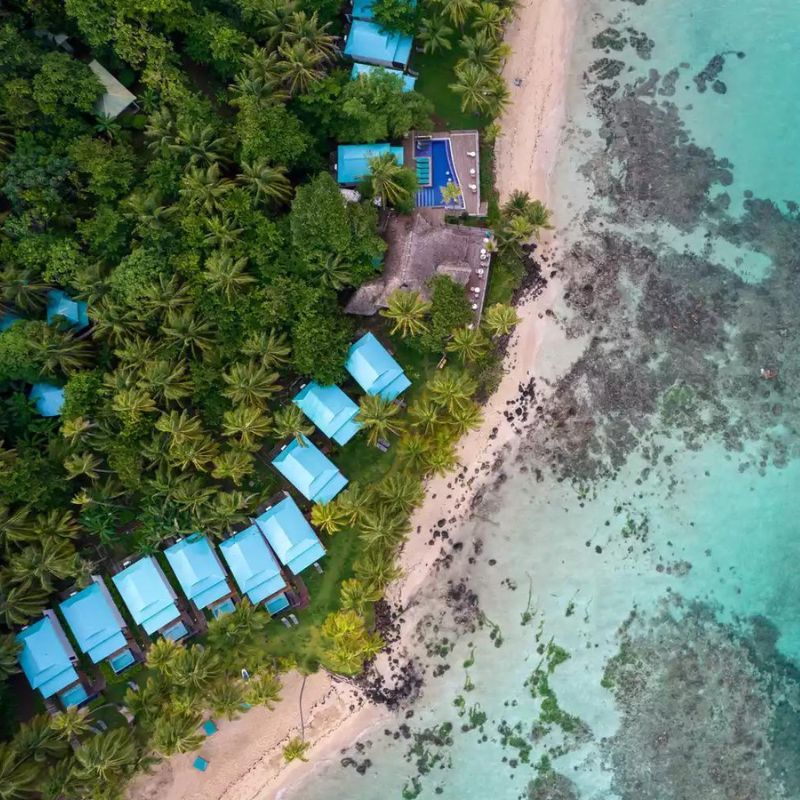
From watching dead goat polo to savouring boorsok to learning eagle hunting, a writer experiences authentic Kyrgyzstan on a 1,500-kilometre drive across the country. Text by Santosh Ojha; Photographs by Milind Kale
Katya had covered the dastarqon with goodies—an assortment of bread, preserves, fruits, cookies, juices, and Kyrgyz snacks. With her forehead covered by a jooluk (scarf),
the frail and diminutive Kyrgyz hostess was waiting with her husband Murat at the gate of her guesthouse. We had driven around 200 kilometres from Bishkek, the capital of Kyrgyzstan, on the first day of our 1,500-kilometre self-drive trip across the country. We had crossed the Too Ashuu pass, the semi-frozen River Kekemeren, and entered Kyzyl-Oi village. Katya’s guesthouse was our halt for the night. We were to occupy three tiny
rooms, some of us taking up cots and others sprawled on mattresses on the floor. We would share the space with a massive dining table, a toilet, and a coal-fired oven, which would keep us warm even when the temperature outside touched –4°C.

Our team of 14 was led by a taciturn local guide, Azamat Chiketaev, and the two partners
of Wander Beyond Boundaries, Nidhi Salgame—a steely 40-year-old woman who was the first Indian to drive solo to the ‘Pole of Cold’ (the coldest inhabited place on Earth in Siberia)—and the affable Colonel (retd.) Satty Malik.
LOCAL GAMES
After gorging on Katya’s snack platter, we walked up to a nearby ‘stadium’ located on a
snowy plateau to witness a game of kok boru, the Kyrgyz name for dead goat polo played by Central Asia’s nomadic tribes for millennia. The teams were awaiting us when we huffed and puffed our way up. Also present was an excited group of spectators, many seated on their horses. The players—four per team—gathered on one side of the central line as the referee rode up to the other and dropped the beheaded carcass of a goat. Seconds later, there was a melee of horsemen jostling to pick up the goat, bending down from their saddles at impossible angles to grab the goat. Even the horses were trained to block each other. Finally, a player clad in a red shirt grabbed the cadaver, wedged it between his
right thigh and the side of his horse, and galloped to the opposition’s goal post, his opponents in hot pursuit all the while. The thrilled spectators cheered and screamed out advice from the sidelines. The red-shirt reached the tai-kazan (a shallow well serving as a goal post) of the opposing team and attempted to drop the goat into it, with his opponents breathing down his neck. The crowd went ballistic. There was a collective cry of dismay when the lobbed carcass missed the goal!

The snowfall had thickened by now, but the players were just warming up. What followed
was a 40-minute-long frenetic display of skill, strength, stealth, and stamina as the men and beasts battled to score goals.
SURPRISES EN ROUTE
The following day, we crossed the Kyzart Pass, driving on a tortuous snow-covered road to
Naryn. It was snowing heavily. Azamat’s voice crackled over the radio, “Time for us to have
some Song Kul fish.” The owner of a roadside eatery, Zameer with a full beard, welcomed us into his tiny establishment. The fare on offer was siga fish, caught from the largest freshwater lake in Kyrgyzstan, Song Kul. Sautéed and lightly salted, the local delicacy was delicious! We left for Kel Suu, a frozen lake close to the China border, at sunrise, as the temperature dipped to –10°C. Midway, we were stopped at the border control gate, where our passports and driving permissions were meticulously checked. A burly six-foot-tall soldier, armed with a menacing gun, marched up to our convoy to inspect our vehicles. We remained seated in our cars, as instructed, and naively thought we were being checked for explosives and other contraband. However, this soldier was checking the cars to see what he could take for himself—and perhaps his team. In the glove box of my car, he found five
cigarette packs. He helped himself to one and proceeded. When our convoy exchanged notes later, we realised that we were poorer by three packs of cigarettes and a bottle of Coca Cola. It was a small sacrifice to make for the trip, an unplanned gift to our Kyrgyz friends who worked in rough weather and terrain.

We reached Kel Suu village at dusk—tired, cold, and hungry. I did a double-take when pack leader Salgame announced, “This is our residence for the next two nights,” pointing to a dilapidated train wagon stationed on a white expanse of snow in the middle of nowhere. “The winter toilet is there,” she pointed to a tin shed some 75 metres away, “and the Western-style toilet is there,” indicating another structure looming in the fading light some
100 metres in the opposite direction!
After the freezing cold, our heated living quarters were a welcome respite. The now-familiar
coal stove kept the interiors comfortably warm, and water boiled in samovars. Dinner presented yet another local surprise: Laghman, a thick noodle dish; manty, dumplings filled with meat; and boorsok, a bread that looked like the Indian bhatura.
The following day, we drove five kilometres over icy terrain and frozen streams towards
the Lake Kel Suu in what turned out to be a treacherous and challenging drive. Our host,
Almaz, and his teenage daughter, Bermet, were already waiting with horses when we arrived. And so, off we rode, with Almaz walking and holding the reins of five of the horses, and Bermet guiding the remaining five while riding her own. The short and stocky Almaz walked uphill for about four kilometres without pausing. Against the backdrop of dark and jagged mountains, and the frozen white lake steeped in silence, the journey was mystical and soothing.
ON THE HUNT
Our trip was nearing its end, but the thrills were far from over. Talgar, in his 60s, and Tumara, all of 19 years, met us at a designated place near the Bokonbaevo village, not very far from the Lake Issyk Kul. Talgar was a berkutchi (eagle hunter) who wore a kalpak (Kyrgyz hat) and jacket and trousers embroidered with traditional motifs. Tumara was the berkut (golden eagle) with a sleeve around its eyes acting as a blindfold. We were visiting them for a demonstration of eagle hunting.

Talgar explained that an eagle hunter himself fetches a baby eagle from the nest and rears it like his own child—talking and singing to the bird, feeding it, and spending a few hours with it each day. Through its life, an eagle listens only to its master. Its training prepares it to hunt rabbits and foxes on command.
Each of us was asked to don a leather sleeve on our right arm, onto which the eagle would
perch. The eagle hunter’s kalpak was placed on our heads to complete the deception! A gentle shake of the arm was the signal to the bird to spread its massive wings—spanning over two metres! It was our chance to feel the weight of years of Kyrgyz tradition. Later, Talgar ran a few hundred metres away to an icy cliff with his eagle. With their vantage point established, he let Tumara loose. The golden eagle soared high, majestically, trying to spot its quarry. In the blink of an eye, it swooped down on a rabbit scampering on a nearby field. It began tucking into its meal with its sharp beak until Talgar ran down and took charge. He gently caressed the eagle, perhaps congratulating it, and released the dead rabbit from its claws.
HOME AWAY FROM HOME
At Bel Tam Yurt Camp, I was led to a yurt on the banks of the Issyk Kul that I was going to share with two others. Thin strips of wood make the yurt shell, and it is layered with felt and skin to keep the interiors warm. A yurt is the lifeline of all nomadic races in Central Asia, and the Kyrgyz were, until a few decades ago, nomadic people. They would travel to meadows on higher altitudes to graze their cattle. The yurts would move along with them,
keeping them protected from the intense winters.

While the thick curtain on the low doorway was heavy and the wooden entrance door tiny, I was astonished at the warmth inside the dwelling. It wasn’t just the standard coal-fired stove inside that lent it warmth, but also its homely decor, replete with colourful carpets, and traditional bright designs on the door and the walls. That night, cocooned in the yurt, I had the best sleep of my life. What was planned was ambitious, what transpired was gruelling, and what emerged was the memory of a lifetime. Nine days in a surreal white world, driving on remote icy lands, with kind hosts and fish sellers, expert eagle hunters, and so much more! How else do you get to experience a foreign culture, but by wandering beyond boundaries, both without and within?
Getting There
The best option is to fly Air Astana (airastana.com) from Delhi to Almaty, Kazakhstan,
and then after a brief layover, onwards to Bishkek. There’s an alternative route via Tashkent on Uzbekistan Airways (uzairways.com).
Stay
In the capital, Hyatt Regency Bishkek (hyatt.com) and Sheraton Bishkek (marriott.com) are luxurious options. I stayed in the comfortable four-star Plaza Hotel Bishkek (plazahotel.kg/en). Kyzyl-Oi has only guesthouses on offer; I stayed in Katya’s Guest House (tripadvisor.com). In Naryn, Khan Tengri Hotel (booking.com) is the best on offer. Kel Suu is a remote village where basic guest houses are available in winters and yurt
camps to open up in summer. In Issyk Kul, there are multiple hotels and yurt camps available; I stayed at the Bel Tam Yurt Camp (facebook.com/Yurtcampbeltam).
Tour
Wander Beyond Boundaries (wanderbeyondboundaries.com) organises self-drive extreme overland journeys to remote lands and cultures, one of which is Kyrgyzstan.
Related: A Road Trip Through Iceland’s Westfjords Is Full Of Remote Possibilities!









